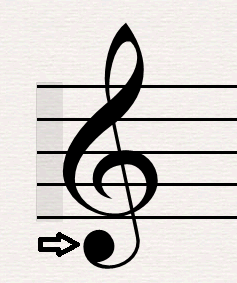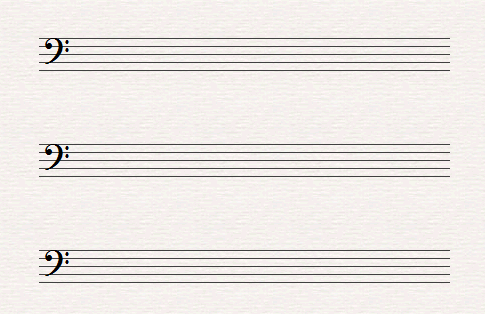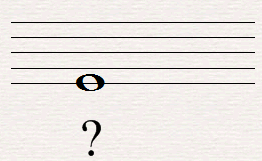Clef Symbols
What are clef symbols, and why are they the first symbol placed on a staff?
In the first lesson of this section, we learned that a musical staff consists of five lines and four spaces, and that each line or space corresponds to a musical note. What we didn’t discuss yet is which notes the various lines and spaces correspond to.
And there is a fantastic reason for that – it’s impossible to determine which note is represented by each line/space until we place a clef symbol at the beginning of the staff.
This is the purpose of clef symbols, to tell us which notes are associated with each line or space. Here are some examples of what clef symbols look like (shown in the shaded areas):

The “Infinite Staff”
Imagine for a moment a musical staff that, instead of having just five lines, had a never-ending amount of lines extending upward and downward. These lines, and the spaces in between them, would represent every musical note in existence. The higher up the staff, the higher the note, the lower down the staff, the lower the note. It’s really not such a crazy idea, since musical notes really do go on forever and ever in both directions (even though at some point we can’t hear them anymore). Here’s what this “infinite staff” might look like:
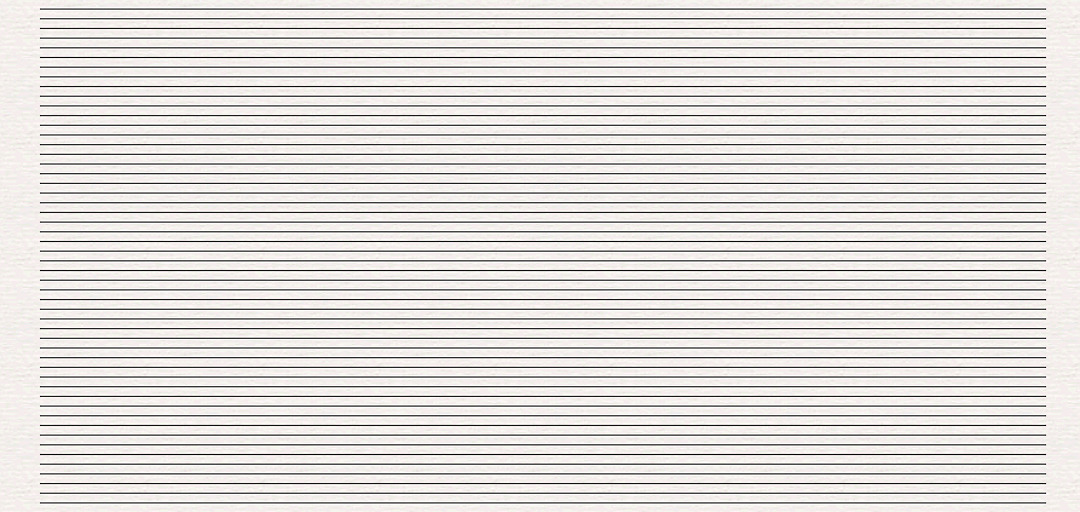
Hmm, we can probably spot a major problem right away, though. If we place a note on one of the lines or spaces on this “infinite staff”, how in the world are we going to be able to figure out which note it is, at a glance!?
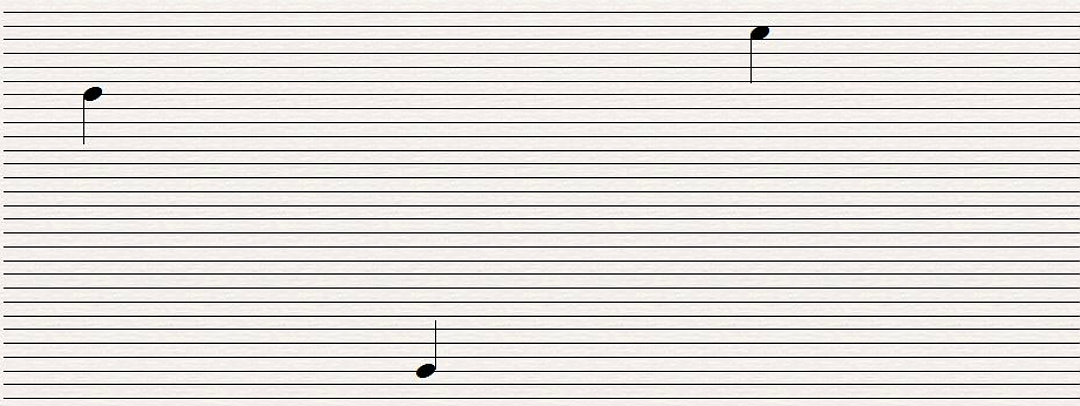
There are just way too many lines and spaces! When we’re reading and writing music, we don’t have time to count the number of lines and spaces. We need a system that makes it possible to identify what line or space a note is on just by looking. So instead, our musical staff is limited (thankfully!) to just five lines, plus the four spaces in between:

The Range Game
Now, even though clearly the infinite staff thing didn’t work, the truth is that it’s really still there, just we can’t see it. In other words, the five lines and four spaces of the staff don’t exist on their own. They are really nothing more than a specific 5-line section of the giant, “infinite staff.” All the other lines are still there, just they’re invisible, or hidden. A staff just highlights a specific set of five lines, and leaves the other lines to the imagination:
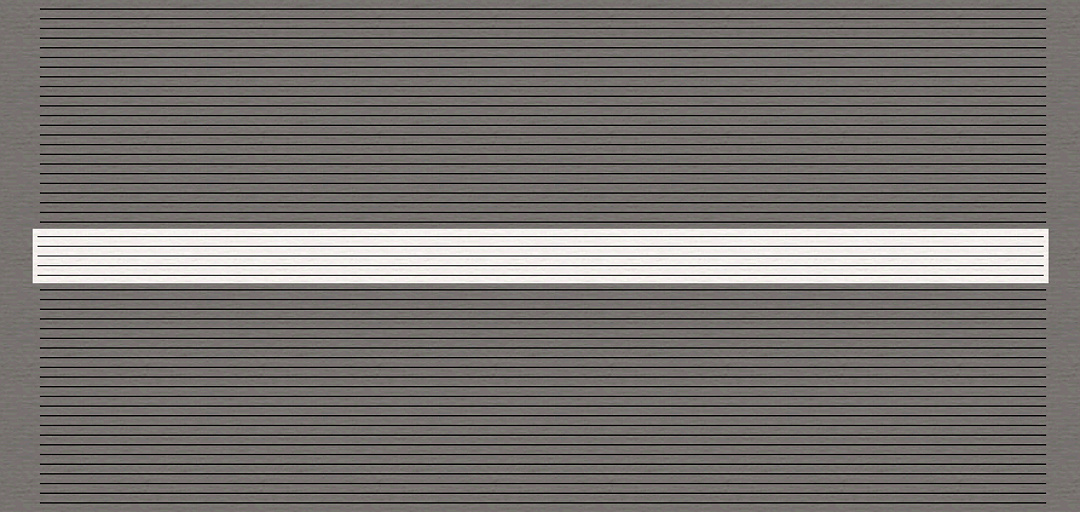
The question is, which five lines are being highlighted? It’s possible to move the highlighted area (in the picture above) higher or lower, anywhere we want on the infinite staff (kind of like the Range Game from the Price Is Right.) This is where clef symbols come in. Clef symbols determine which five lines from the “infinite staff” are currently being highlighted, or focused on.
Commonly Used Clef Symbols
In the coming lessons, we’re going to learn about the different kinds of clef symbols in much more detail. For now, though, let’s introduce ourselves to some of the most common clefs. By far, the two most common are the treble clef and the bass clef. Here’s what they look like:
Not quite as common, but still very important, are the alto and tenor clefs:
These are the 4 main clefs used nowadays (not including percussion instruments).
Different Clefs For Different Folks
What’s the point of having a bunch of clefs to choose from? What makes us choose one over another in a given situation? Let’s say we’re writing for a specific instrument. Every instrument has a certain range, as we learned. That obviously means we have to restrict all the notes we write to be within that range. Otherwise, when the musician tries to read the music, he/she will not be able to play certain note(s), because it’s impossible (or extremely difficult) on that instrument! In choosing the best clef symbol, it makes sense to use one that focuses the musical staff on as similar an area as possible to the range of the instrument we’re writing for. This way, the notes will mostly be in the center of the staff, not way up high or down low. This is why there are several clef symbols to choose from. Some focus the musical staff up in a higher octave register, some place it lower down, some in the middle. We can choose the one that fits best for each situation. 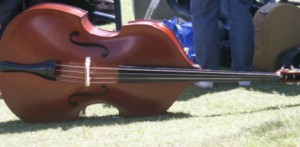
Clef Symbol Placement
Clef symbols are placed at the beginning of a line of music, on the left side of the staff. They should be indented a tiny bit, as we can see below:
The clef is usually repeated on every single line of the music (except in certain styles). This way, the player never has to think about which clef they’re reading from, because it’s always right there in front of them.
Same Position, Totally Different Note
Without clef symbols, we would have absolutely no way of knowing which note was associated with which line or space. For example, what note is the lowest of the 5 lines on the staff?
The answer depends completely on which clef we’re using. In treble clef, it’s the note E4, in bass clef it’s G2, in alto clef it’s F3, and in tenor clef it’s D3.

So you can see that until we determine which clef we’re in, the lines and spaces are meaningless! That’s why they’re the very first symbol on the staff. Once we put a clef symbol at the beginning of the staff, immediately each line and space becomes associated with a specific note. Now we’re in business.
Practice Quiz
Clef Symbols Quiz
Test your knowledge of this lesson with the following quiz:
Image Attribution:
L1000876_v1 by Sigfrid Lundberg ©2012 CC BY 2.0
practice makes perfect. by Jukie Bot ©2013 CC by 2.0


